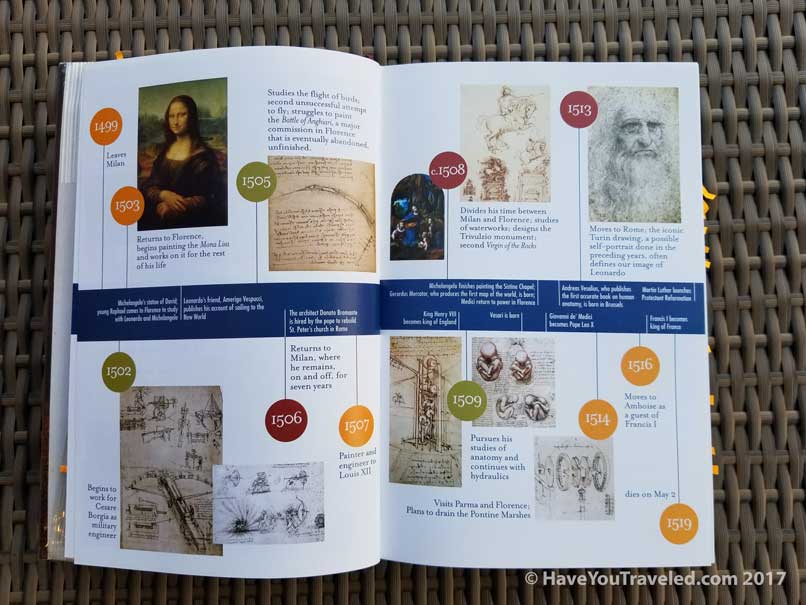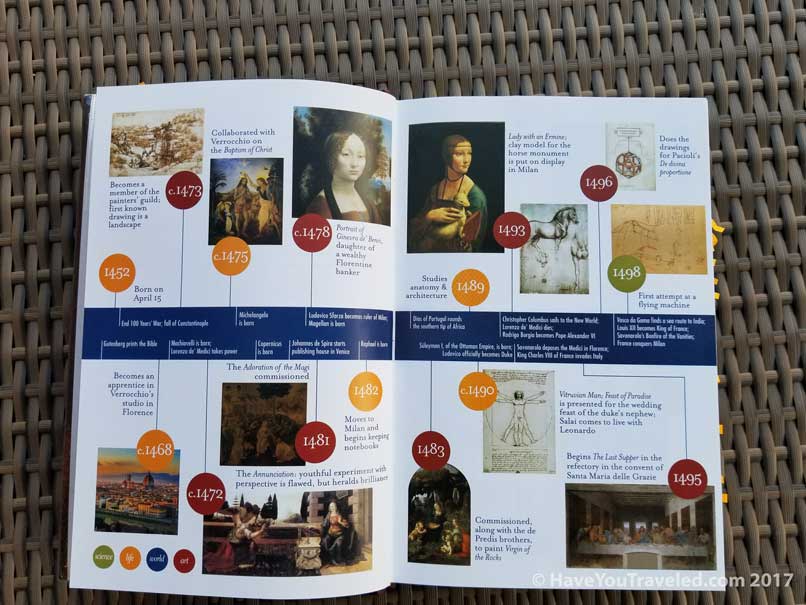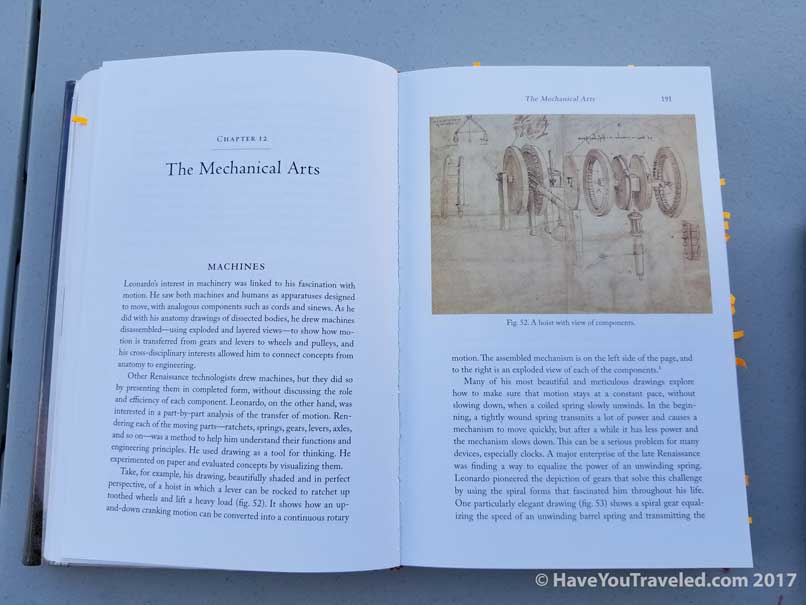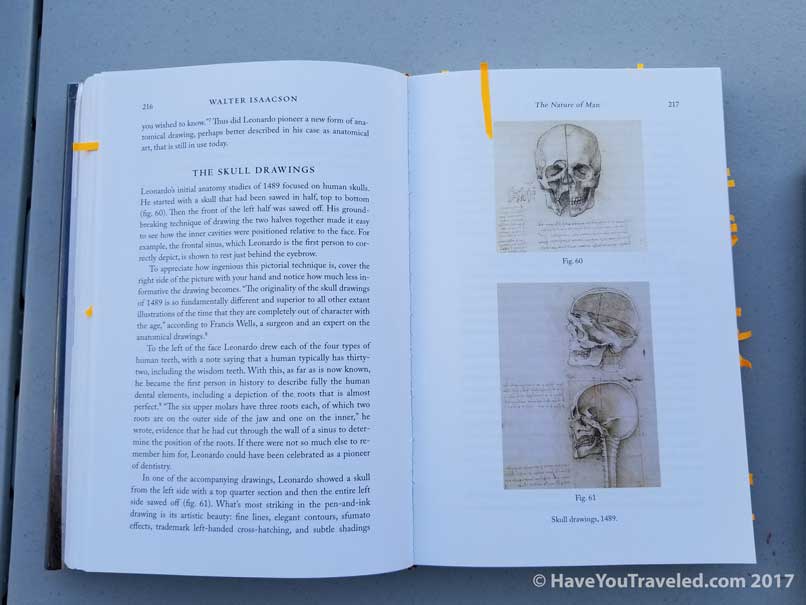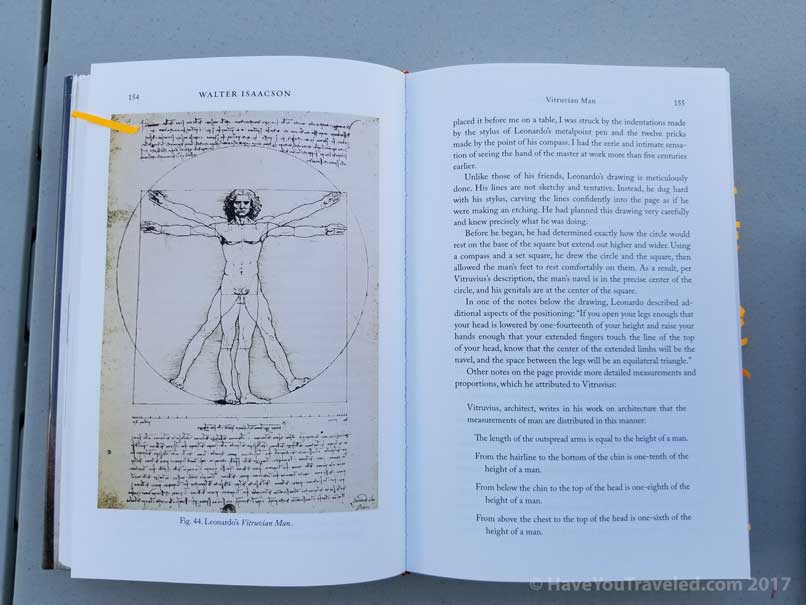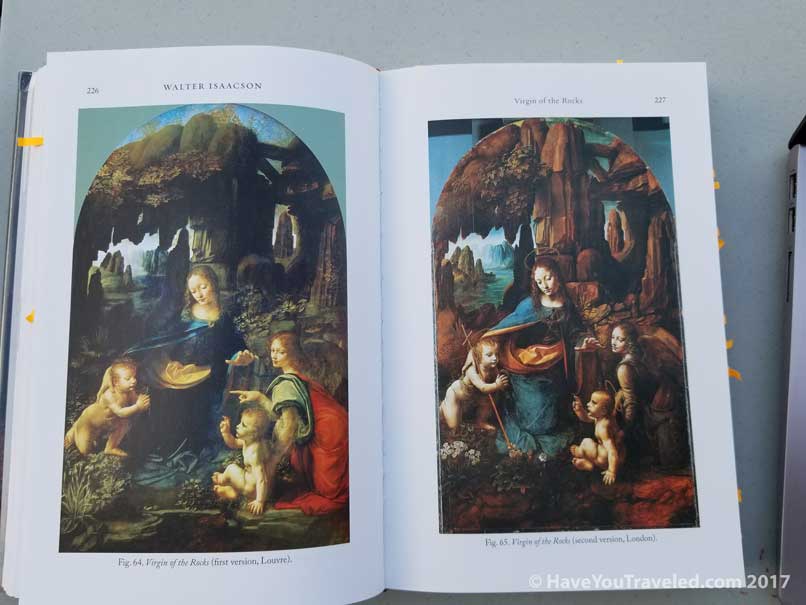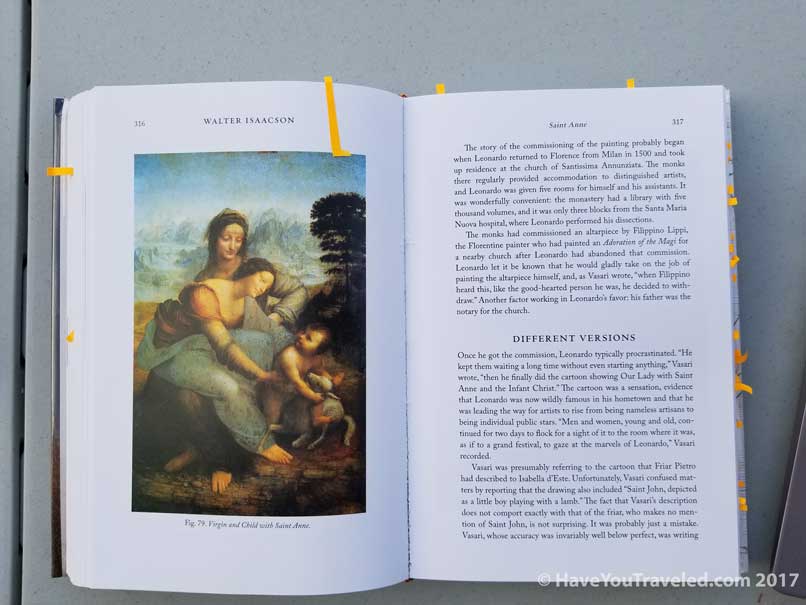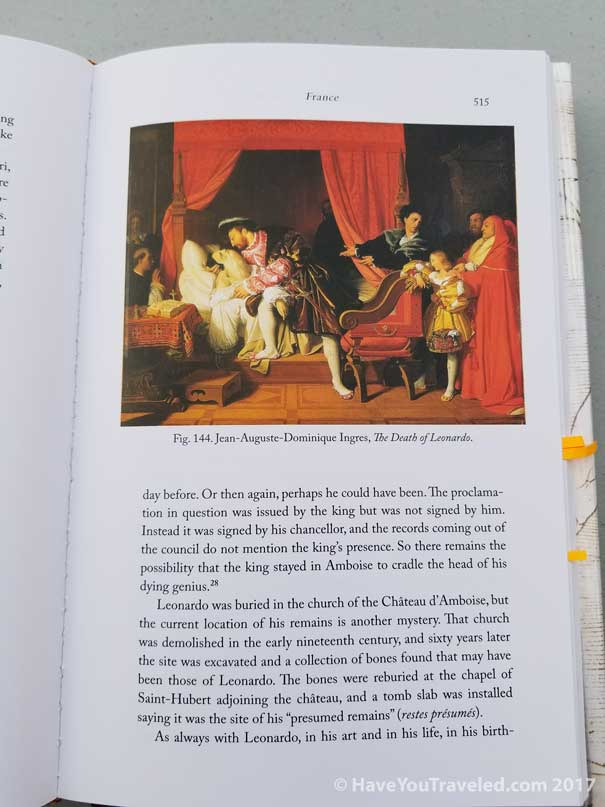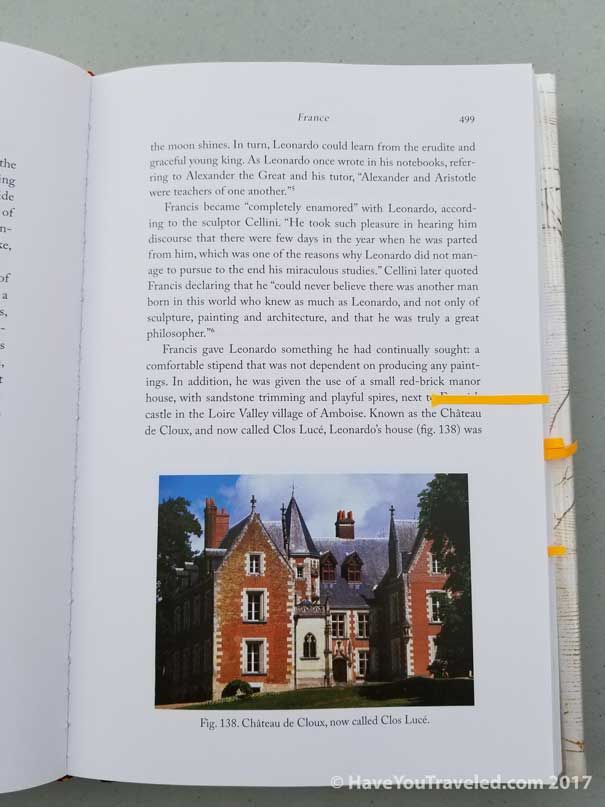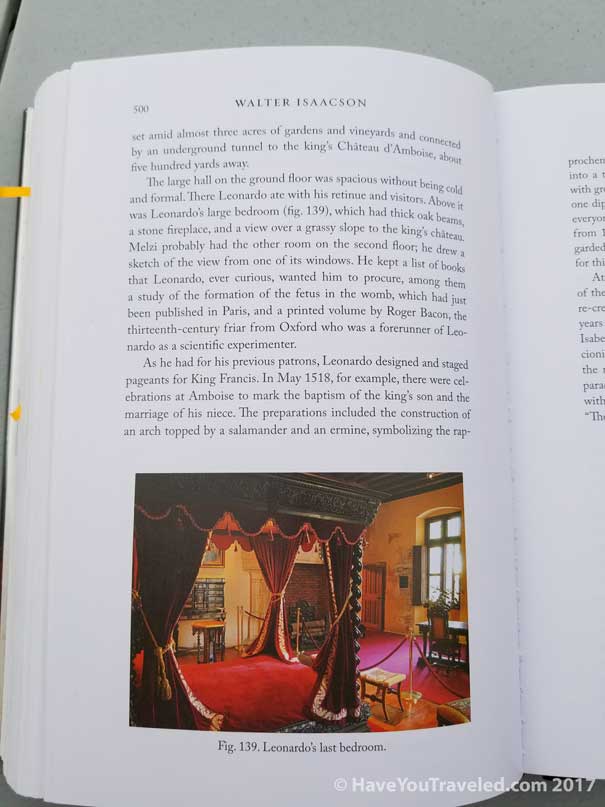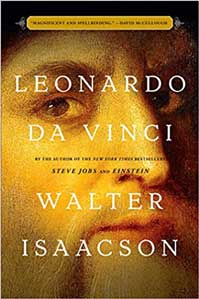 Leonardo da Vinci
Leonardo da Vinci
Walter Isaacson
This brand new book was on my hold list a the library but turned out to be quite timely for our upcoming trip to France.
I enjoyed Isaacson’s biography on Einstein a few years back but I was interested in this book because it claimed to be drawn most heavily by Leonardo’s sketchbooks. And it is a beautiful book. Atypically, the images in the book are spread throughout the book, not clustered in the center.
The fresh, thick, white paper makes the 600 pages weigh a ton but it’s well worth the work as the sketches and paintings are discussed right alongside the images. When examining color and style of paintings or left-handed hashmarks in anatomical drawings the details are there on the page, mirrored script and all.
Overview
Leonardo was a genius. No news there. In fact, he’s not really a favorite artist in our house. I have new appreciation for his St Anne piece (and will be sure to add to Paris itinerary!) but otherwise we are far on the Michelangelo side of the Leo vs Michelangelo argument. However, Leo was primarily a scientist, specifically fashioning himself an engineer.
Without doubt he was a marvelous learner with a beautiful mind. A shared “genius” quality, he never seemed to lose his innate childhood curiosity. Why is the sky blue? Why were their oceanic fossils found high on mountaintops? He was obsessed with the mechanics of water. And his anatomical sketches (via dissection analysis) are some of the most beautiful and arresting images you’ll ever see. An infinitely interesting man and a thinker centuries ahead of his time.
Application for Travel: France 2018
Though born outside of Florence and having lived there in his formative years, much of Leonardo can be found in Milan. Wit the exception of an elaborate detour on our 2016 trip, we’ve never been to Milan, but when we finally get there we’ll be revisiting Mr. da Vinci thoroughly.
For us, Leonardo is actually quite relevant to our upcoming France trip. First, in our ongoing list of possible daytrips from Paris we can now add Le Château du Clos Luce, where King Francis I invited him to be a member of his court and where Leonardo died at age 67. For Leo’s works we can start at the Louvre where, of course, is the Mona Lisa, but also the Virgin of the Rocks, La belle ferronnière, the aforementioned Virgin and Child with St. Anne, St. John the Baptist, and Bacchus. Even Ingres’ The Death of Leonardo da Vinci, which shows the weeping King Francis, is currently housed in the Petit Palais, just down the street from the d’Orsay museum (noted immediately to our Paris points of interest list).
Application for Travel: Making connections for the kids
When traveling with kids, it’s important to make connections between what they already know and what they’ve shown interest in and what they are about to see or learn about. Simple reminders can make a lot of difference. Leonardo living at the same time as Michelangelo (if they enjoyed the David perhaps) or that Leonardo studied the muscles or how to build bridges, or was a vegetarian, etc. if that’s what drawn the kids in.
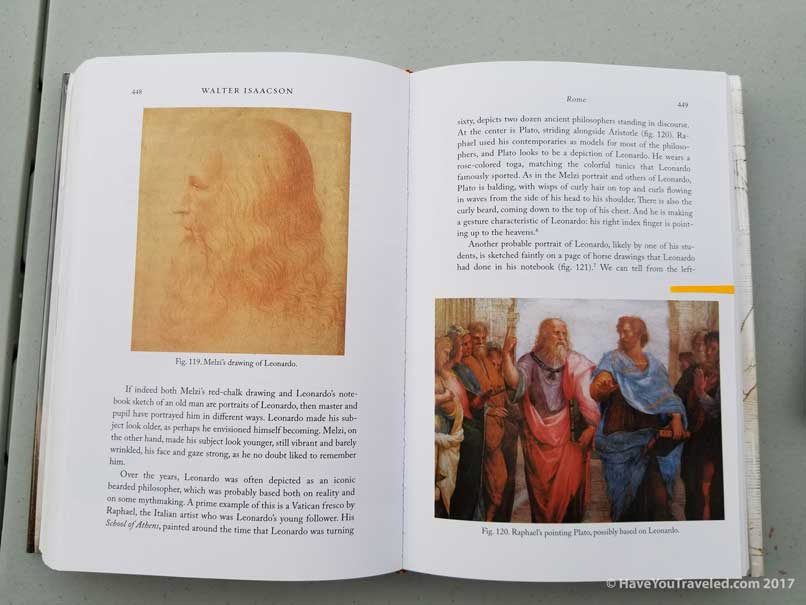
Our kids are about to turn 5 and 3 so the imagery of this text as well as the connections to Florence (they were there in 2016) and to engineering (building with blocks, Legos, etc.) and art (our son was at the Louvre in 2014 and thus slept through many of Leonardo’s works) made it an experience for the whole family. Raphael’s presumed inspiration for the School of Athens we saw at the Vatican in 2016 was a fun “secret” to disclose to the kids.
Making connections, i.e., what even our grownup brains do, helps make things seem accessible for kids. As mentioned in this recent post, building on what the kids have already experienced can lead to increased confidence that they can learn and with a little focus and hard work they can continue to learn.

It doesn’t even have to be academic. Check out what our son did when he saw Leonardo’s rhombicuboctahedron. We need more pieces but he was on the right track!
Talk soon,
Dan
PS This book is quite accessible and an easy read. I would recommend it for art and history ans science novices as well as kids 13+.
Disclosure: We encourage you to shop around for the best deals and for families to utilize their local library. However, if you do plan to buy, if you use our links it sends a few pennies towards maintaining this website.

